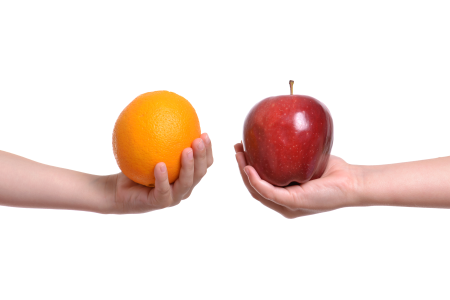How to hunt down numerical comparisons
When I wrote an annual report about charitable giving in Kansas City, I wanted to compare the $770 million Kansas Citians gave to charitable organizations in one year to make that number more meaningful to the audience.

As Chip Scanlan of the Poynter Institute says:
“Every time you feel your fingers reach for the top row of the keyboard, ask, ‘What’s it like?’”
To track down the comparisons, I:
- Used the Business Journal’s Book of Lists to report that $770 million was “more than the annual revenues of Blue Cross/Blue Shield” and “more than the combined annual budgets of the metropolitan area’s three largest school districts.”
- Checked the Bureau of Labor Statistics to find the city’s average wage. After a few minutes with my calculator, I was able to report: “To achieve that amount, some 24,000 people would have to work full time for a year at Kansas City’s average hourly wage of $15.59.”
- Did the math. From the Book of Lists, I learned the size of the student body of one of the city’s largest school districts. I divided $770 million by the number of students. The result: in the neighborhood of $35,000 per student.
- Asked: “What would that buy that students might want?” (That helps you sync your metaphors with your topic.) My answer: some kind of car. That year, Jeeps were popular, so I …
- Googled “how much is a jeep” to find out what kind of Jeep I could get for $35,000.
As a result, I was able to report that:
The $770 million Kansas Citians give to charity each year is more than enough to buy every student in the Kansas City, Kan., School District a brand-new Jeep Grand Cherokee.
Anyone who’s mastered seventh-grade math can add some statistical evidence to most stories. All it takes is some extra time with your BFF and research assistant Google, the calculator on your phone and a few minutes to figure out how to figure it out.
How can you help readers get the numbers?
If your readers are like most, they have, on average, below-basic numerical literacy, according to a massive international literacy study.
 In this environment, how well are they understanding your statistics?
In this environment, how well are they understanding your statistics?
Learn to make numbers interesting and understandable at Rev Up Readability, our clear-writing workshop on June 20.
There, you’ll learn to avoid statistics soup and data dumps; how to make numbers more emotional; how to create meaningful — not discombobulating — charts and which key question to ask every time your fingers reach for the top row of the keyboard.
Save up to $100 with our group discounts.
